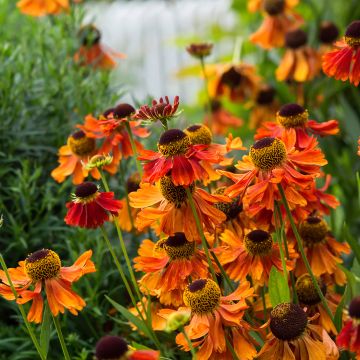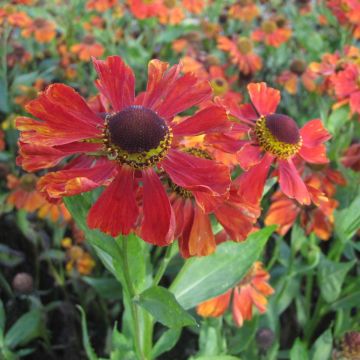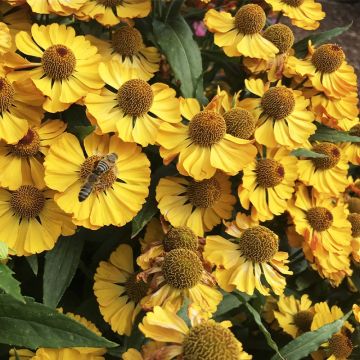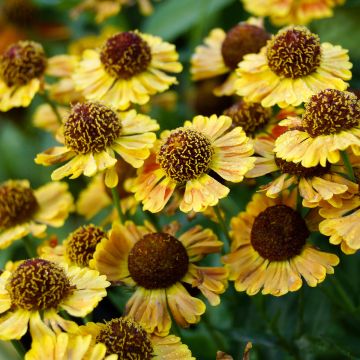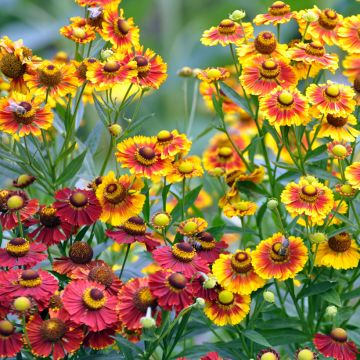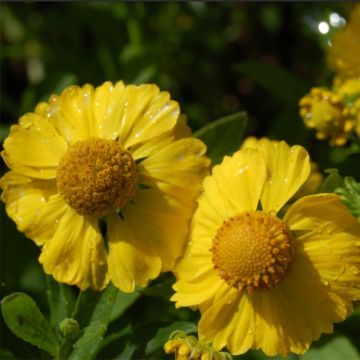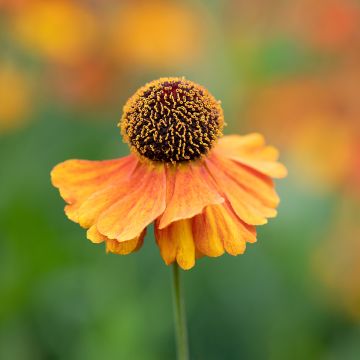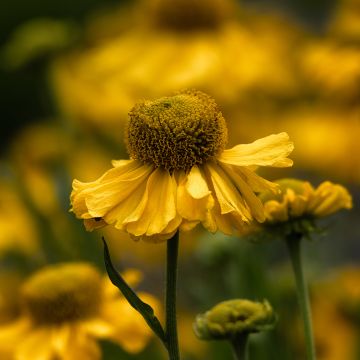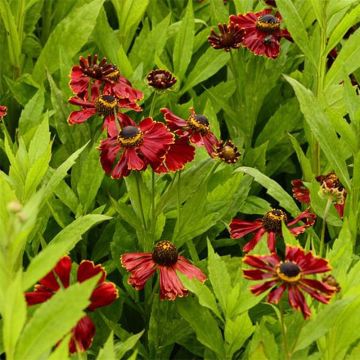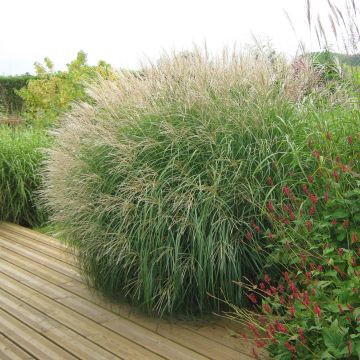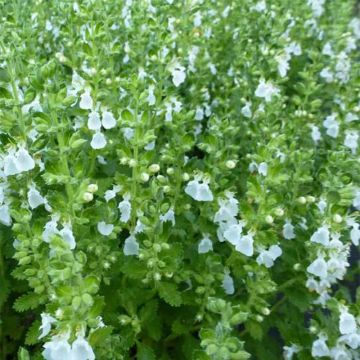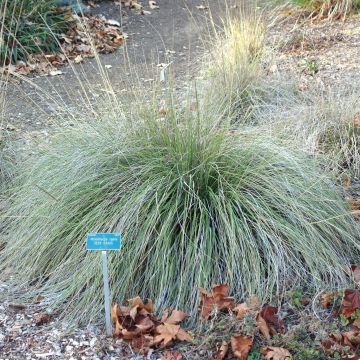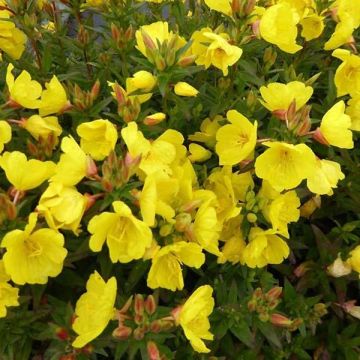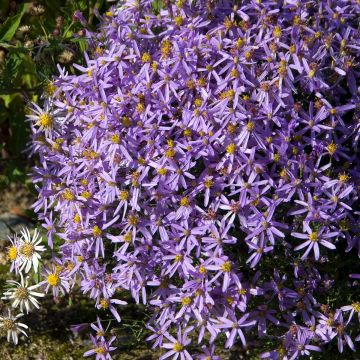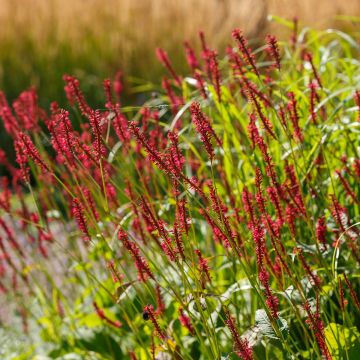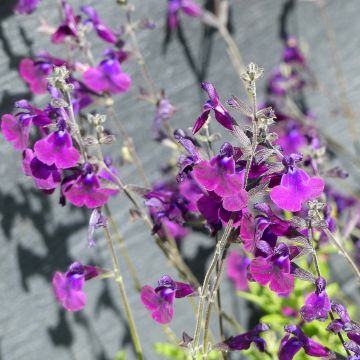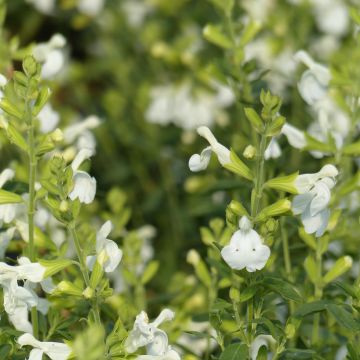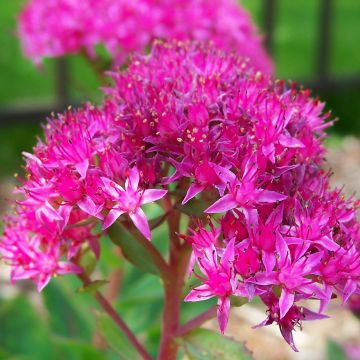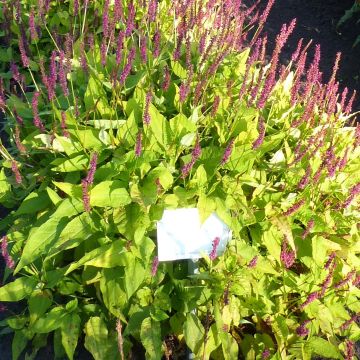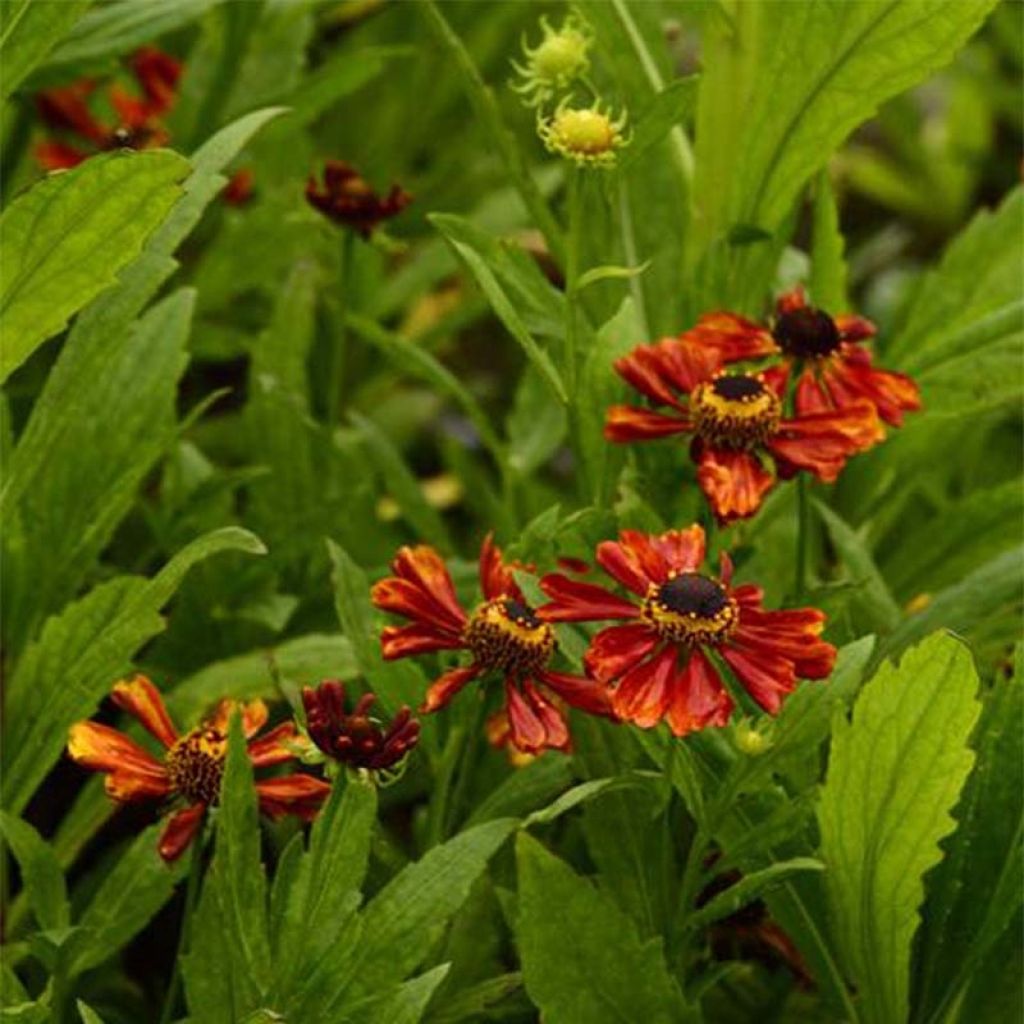

Helenium Flammendes Katchen - Sneezeweed
Helenium Flammendes Katchen - Sneezeweed
Helenium Flammendes Katchen
Sneezeweed
As is normal at this time, the young plant is almost devoid of foliage, there is only a clump of roots. I hope it will come back in spring.
Jaime, 29/11/2022
This item cannot be shipped to the selected country
Delivery charge from €5.90
More information
Schedule delivery date,
and select date in basket
This plant carries a 12 months recovery warranty
More information
We guarantee the quality of our plants for a full growing cycle, and will replace at our expense any plant that fails to recover under normal climatic and planting conditions.
From €5.90 for pickup delivery and €6.90 for home delivery
Express home delivery from €8.90.

Does this plant fit my garden?
Set up your Plantfit profile →
Description
The 'Flammendes Katchen' Helenium is an excellent variety of Helenium, both highly floriferous, beautifully coloured, and with a very good performance in flower beds. An additional asset for this robust perennial plant is its long and flamboyant summer flowering. Its head-like flowers, resembling daisies with widened petals, display different flaming tones of red, orange, copper, and yellow throughout the day, centered around a large heart that transitions from brown to golden yellow. The foliage, a beautiful dark green, complements the warm hue of the flowers. It is an easy plant to grow in the sun in any good, moisture-retaining garden soil. Its flowers are magnificent in a vase.
The natural species of Heleniums are perennials native to North America, usually found near swamps or in humid and sunny locations. The 'Flammendes Katchen' cultivar offers an extended summer flowering period, renewing from mid-July to late September if one takes care to regularly remove faded flowers, with a fiery colour and a strong resistance to inclement weather. The plant forms robust and ramified leafy stems, reaching about 1.20m (4ft) in height. The leaves, coloured a dark olive green, are lanceolate in shape with slightly dentate margins, and are arranged alternately along the stems. The flowers, organized in head-like clusters, bloom at the ends of the stems. Measuring 6cm (2in) across, these clusters are centered around a large cone coloured in brown, gradually giving way to stamens covered in yellow pollen. At the periphery, brightly coloured florets in vivid red and bordered in yellow fade into shades of orange, copper, and yellow. It is when they are bathed in sunlight that the colors of Heleniums are most astonishing. They have the advantage of not fading in the sun.
The 'Flammendes 'Katchen' Helenium is quite hardy and never gets sick. It thrives in ordinary soil but loves growing in sunny flower beds. Insensitive to heat as long as its roots can sink into cool soil, it is easy to grow and flowers just as well in slopes and flower beds as in containers on the terrace or balcony. Despite all these qualities, Heleniums remain rare in gardens. Perhaps because their warm tones herald the arrival of autumn. This Helenium pairs very well with summer blooms in yellow (Goldenrods), blue (Catmints, buglosses, perennial salvias, agastaches), as well as with asters and grasses. It can also be combined with plants with purple foliage (Physocarpus 'Little Devil', Berberis atropurpurea 'Nana', 'Black Lace' elderberry) or golden foliage (Spirea Goldmound).
Report an error about the product description
Helenium Flammendes Katchen - Sneezeweed in pictures
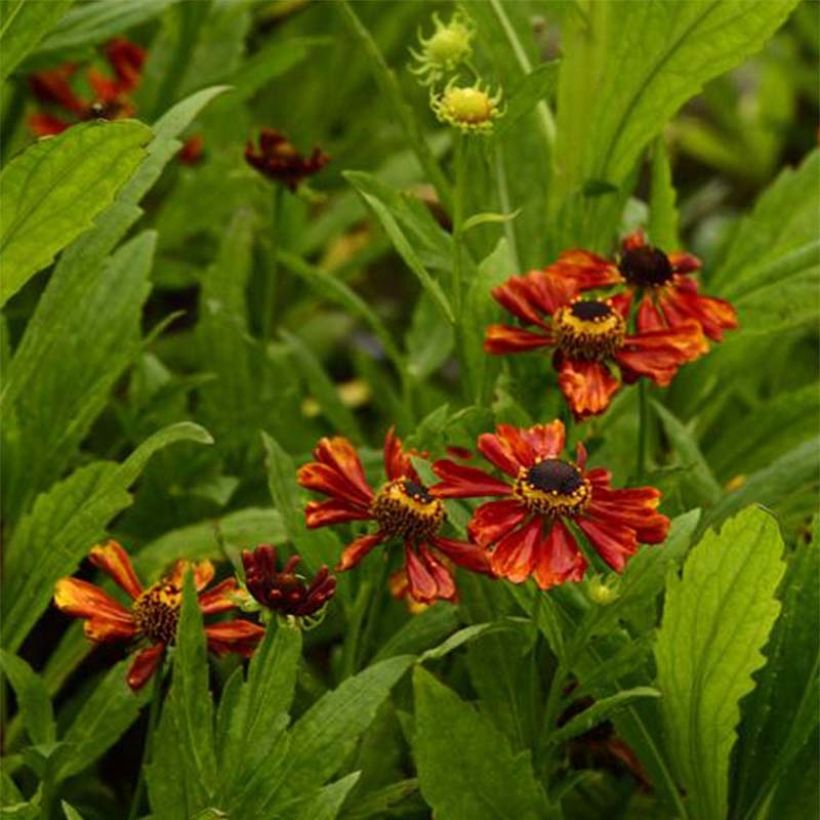

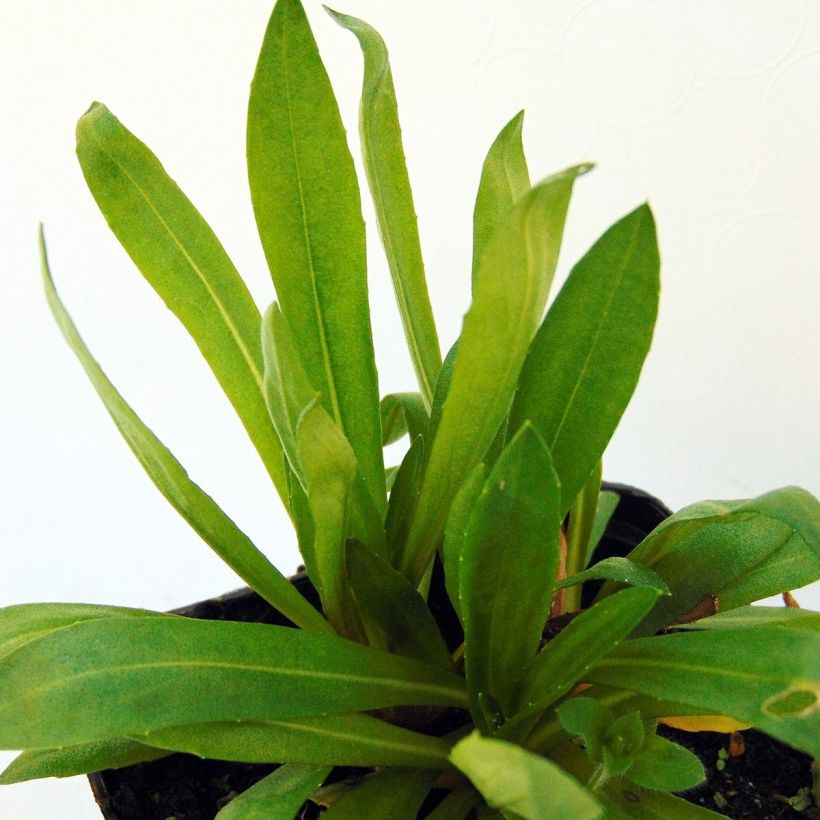

Flowering
Foliage
Plant habit
Botanical data
Helenium
Flammendes Katchen
Asteraceae
Sneezeweed
Cultivar or hybrid
Other Helenium
Planting and care
Plant the 'Flammendes Katchen' Helenium in ordinary soil provided it is fertile, moist but well-drained by adding planting soil and/or well-rotted compost. Choose a very sunny exposure for it. Water regularly after planting, then only water in case of prolonged drought once established. This variety generally does not require staking, except perhaps in our windy or very rainy regions. Prune the plant once the stems have turned black. Every 2 to 3 years, you can divide the clump in spring or autumn to regenerate the plant and give it renewed vigor.
Planting period
Intended location
Care
-
, onOrder confirmed
Reply from on Promesse de fleurs
Late flowering perennials
Haven't found what you were looking for?
Hardiness is the lowest winter temperature a plant can endure without suffering serious damage or even dying. However, hardiness is affected by location (a sheltered area, such as a patio), protection (winter cover) and soil type (hardiness is improved by well-drained soil).

Photo Sharing Terms & Conditions
In order to encourage gardeners to interact and share their experiences, Promesse de fleurs offers various media enabling content to be uploaded onto its Site - in particular via the ‘Photo sharing’ module.
The User agrees to refrain from:
- Posting any content that is illegal, prejudicial, insulting, racist, inciteful to hatred, revisionist, contrary to public decency, that infringes on privacy or on the privacy rights of third parties, in particular the publicity rights of persons and goods, intellectual property rights, or the right to privacy.
- Submitting content on behalf of a third party;
- Impersonate the identity of a third party and/or publish any personal information about a third party;
In general, the User undertakes to refrain from any unethical behaviour.
All Content (in particular text, comments, files, images, photos, videos, creative works, etc.), which may be subject to property or intellectual property rights, image or other private rights, shall remain the property of the User, subject to the limited rights granted by the terms of the licence granted by Promesse de fleurs as stated below. Users are at liberty to publish or not to publish such Content on the Site, notably via the ‘Photo Sharing’ facility, and accept that this Content shall be made public and freely accessible, notably on the Internet.
Users further acknowledge, undertake to have ,and guarantee that they hold all necessary rights and permissions to publish such material on the Site, in particular with regard to the legislation in force pertaining to any privacy, property, intellectual property, image, or contractual rights, or rights of any other nature. By publishing such Content on the Site, Users acknowledge accepting full liability as publishers of the Content within the meaning of the law, and grant Promesse de fleurs, free of charge, an inclusive, worldwide licence for the said Content for the entire duration of its publication, including all reproduction, representation, up/downloading, displaying, performing, transmission, and storage rights.
Users also grant permission for their name to be linked to the Content and accept that this link may not always be made available.
By engaging in posting material, Users consent to their Content becoming automatically accessible on the Internet, in particular on other sites and/or blogs and/or web pages of the Promesse de fleurs site, including in particular social pages and the Promesse de fleurs catalogue.
Users may secure the removal of entrusted content free of charge by issuing a simple request via our contact form.
The flowering period indicated on our website applies to countries and regions located in USDA zone 8 (France, the United Kingdom, Ireland, the Netherlands, etc.)
It will vary according to where you live:
- In zones 9 to 10 (Italy, Spain, Greece, etc.), flowering will occur about 2 to 4 weeks earlier.
- In zones 6 to 7 (Germany, Poland, Slovenia, and lower mountainous regions), flowering will be delayed by 2 to 3 weeks.
- In zone 5 (Central Europe, Scandinavia), blooming will be delayed by 3 to 5 weeks.
In temperate climates, pruning of spring-flowering shrubs (forsythia, spireas, etc.) should be done just after flowering.
Pruning of summer-flowering shrubs (Indian Lilac, Perovskia, etc.) can be done in winter or spring.
In cold regions as well as with frost-sensitive plants, avoid pruning too early when severe frosts may still occur.
The planting period indicated on our website applies to countries and regions located in USDA zone 8 (France, United Kingdom, Ireland, Netherlands).
It will vary according to where you live:
- In Mediterranean zones (Marseille, Madrid, Milan, etc.), autumn and winter are the best planting periods.
- In continental zones (Strasbourg, Munich, Vienna, etc.), delay planting by 2 to 3 weeks in spring and bring it forward by 2 to 4 weeks in autumn.
- In mountainous regions (the Alps, Pyrenees, Carpathians, etc.), it is best to plant in late spring (May-June) or late summer (August-September).
The harvesting period indicated on our website applies to countries and regions in USDA zone 8 (France, England, Ireland, the Netherlands).
In colder areas (Scandinavia, Poland, Austria...) fruit and vegetable harvests are likely to be delayed by 3-4 weeks.
In warmer areas (Italy, Spain, Greece, etc.), harvesting will probably take place earlier, depending on weather conditions.
The sowing periods indicated on our website apply to countries and regions within USDA Zone 8 (France, UK, Ireland, Netherlands).
In colder areas (Scandinavia, Poland, Austria...), delay any outdoor sowing by 3-4 weeks, or sow under glass.
In warmer climes (Italy, Spain, Greece, etc.), bring outdoor sowing forward by a few weeks.

































